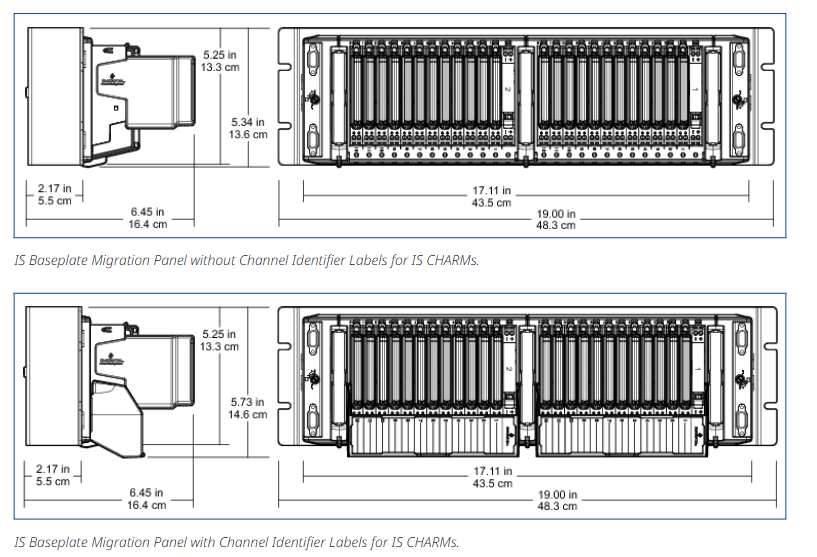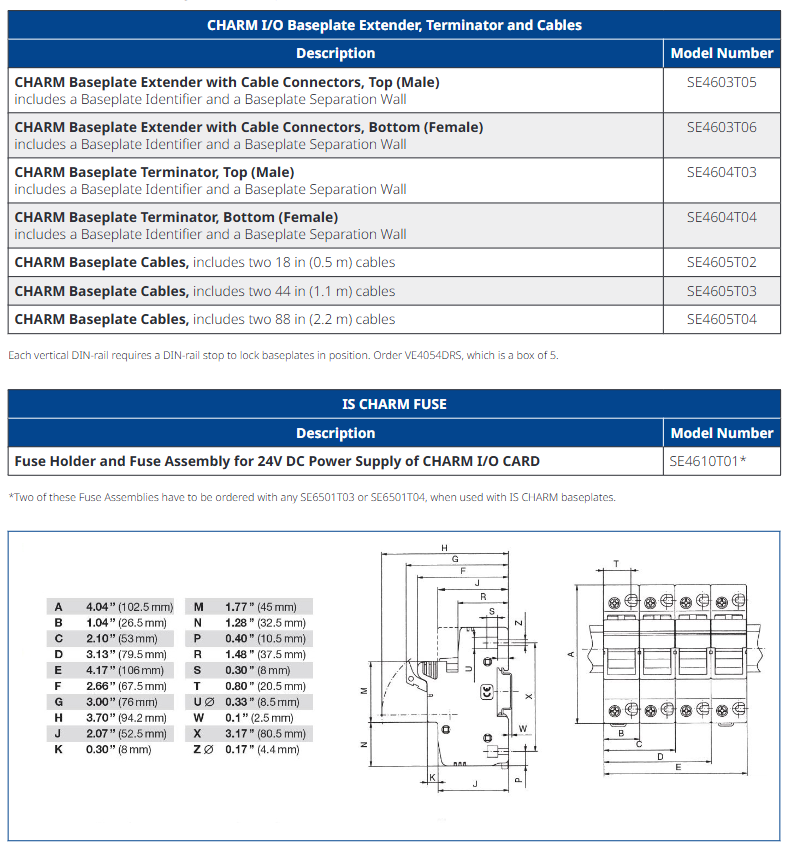Emerson DeltaV Electronic Marshalling Migration Solution
Emerson DeltaV Electronic Marshalling Migration Solution
Core positioning and value of the solution
1. Core Definition and Function
DeltaV electronic grouping is a "flexible I/O architecture" technology that replaces traditional hard wired terminal cabinets with CHARactration Modules and Electronic Marshalling Cabinets to achieve a "soft connection" between field device signals (analog/digital input/output) and DeltaV controllers - without the need to lay a large number of field cables, signal routing can be allocated through configuration software, and the core service is for the migration scenario of old DCS systems.
2. Core migration value
Compared to the traditional migration model of "dismantling old systems and rebuilding new systems", the core advantages of this solution are reflected in the three dimensions of "cost reduction, risk reduction, and efficiency improvement":
Reduce downtime: Support "parallel migration" - while the old system is running normally, complete the installation, configuration, and testing of the new system's electronic grouping architecture, with only a brief shutdown at the final switch (usually in hours, rather than days/weeks of traditional migration).
Reduce hardware and wiring costs: eliminate the need for replacing/laying a large number of on-site cables in traditional migration (especially suitable for large factories, where on-site equipment is far away from control rooms); The electronic grouping cabinet has a smaller volume, reducing the footprint of the control room.
Enhance system flexibility and maintainability: Signal routing is implemented through software configuration, and there is no need to rewire when adding/modifying devices in the future; The CHAR module supports online hot plugging, and fault replacement does not affect other signals; Integrated diagnostic function can quickly locate signal faults (such as disconnection and short circuit).
Compatible with legacy devices: No need to replace existing sensors and actuators on site (such as 4-20mA analog devices and discrete digital devices), directly adapt to old device signal types, and protect early investment.

Core components and technical parameters
1. Core hardware components
The hardware architecture of the DeltaV electronic grouping solution consists of three parts: "field side grouping side controller side". The core components and functions are as follows:
Component Name Model/Specification Core Functions Key Features
The CHAR module (signal interface module) is divided into analog (AI/AO), digital (DI/DO), and special signal (such as RTD, thermocouple) series, such as:
-AI module: supports 4-20mA, 0-10V, etc
-DI module: supports the "conversion interface" between 24Vdc, 120Vac discrete signal field equipment signals and DeltaV systems, realizing signal acquisition/output, isolation, and filtering. 1. Channel level isolation (each channel is independently isolated to prevent interference);
2. Online hot plugging (replacing modules without interrupting system operation);
3. Built in diagnostics (monitoring channel faults, module power supply abnormalities);
4. Protection level IP20 (applicable to control room/cabinet environment)
Electronic grouping cabinet standard 19 inch rack mounted, height optional (such as 42U, 36U), including power module, backplane, integrated CHAR module for heat dissipation unit, power distribution, signal aggregation function, replacing traditional hard wired terminal cabinet. 1. Modular design (configure the number of CHAR modules as needed);
2. Redundant power supply (optional 2 × 24Vdc redundant power supply, anti power failure);
3. Backplane bus (supporting data communication and power supply between modules);
4. Heat dissipation control (built-in fan or natural heat dissipation, suitable for industrial environments)
DeltaV S series controllers (such as S100, S200) receive signal data from electronic grouping modules, execute control logic (such as PID regulation, interlock control), and output control instructions to the site. 1. Redundant configuration (optional controller redundancy to improve reliability);
2. High speed communication (communication with electronic grouping cabinets through EtherNet/IP, cycle ≤ 10ms);
3. Compatible with DeltaV V14 and above software versions
On site wiring terminal box (optional) explosion-proof type (such as Ex d) or ordinary type, used for summarizing and transferring cables of on-site equipment. When the on-site equipment is scattered, the cables are first summarized in the terminal box and then connected to the electronic grouping cabinet through a "backbone cable" to reduce wiring volume. 1. Support mixed access of multiple signal types;
2. Explosion proof models are suitable for hazardous areas (such as Class I, Div 1/2)
2. Key technical parameters (general)
Signal compatibility:
Analog input (AI): 4-20mA (two-wire/four wire system), 0-5V, 0-10V, RTD (Pt100, Cu100), thermocouple (J, K, T, E, R, S type);
Analog output (AO): 4-20mA (sourcing/linking), 0-10V;
Digital input (DI): 24Vdc (wet/dry contact), 120Vac, 230Vac;
Digital output (DO): 24Vdc (maximum 0.5A/channel), relay output (250Vac/5A).
Communication protocol: EtherNet/IP protocol is used between the electronic grouping cabinet and the controller, supporting high-speed data transmission (communication rate 100Mbps full duplex); The module adopts DeltaV dedicated backplane bus internally.
Power requirements: The power supply for the electronic grouping cabinet is 24Vdc (± 10%), and the maximum power consumption of a single cabinet depends on the number of modules (typical value: power consumption of each CHAR module ≤ 5W).
Environmental conditions:
Working temperature: 0 ℃~55 ℃ (cabinet environment);
Storage temperature: -40 ℃~70 ℃;
Relative humidity: 5%~95% (without condensation);
Anti electromagnetic interference: Complies with EN 61000-6-2 (industrial environment immunity) standard.
Security certification:
Electrical safety: UL 61010-1, CSA C22.2 No. 61010-1;
Electromagnetic compatibility (EMC): EN 61326-1 (industrial environment);
Hazardous area certification (some components): ATEX, IECEx (applicable to Zone 2/Class I, Div 2).

Migration process and applicable scenarios
1. Standard migration process
The DeltaV electronic grouping migration follows a "four stage" implementation framework to ensure parallel operation and smooth switching with the old system:
Planning and Evaluation Stage
Evaluate the I/O signal types, quantities, cable routing, and control logic of old systems such as RS3 and WDPF;
Determine the number and installation location of electronic grouping cabinets (usually near old terminal cabinets to reduce cable modifications);
Develop a migration schedule (distinguishing between "non critical circuits" and "critical circuits", prioritizing the migration of non critical circuits).
Installation and configuration phase
Install electronic grouping cabinets, CHAR modules, and on-site wiring terminal boxes (if necessary) while the old system is running normally;
Connect the on-site cable to the CHAR module (without disconnecting the old system wiring, dual system signal acquisition can be achieved through "T-shaped wiring" or parallel wiring);
Configure signal routing in DeltaV software (mapping CHAR module channels to DeltaV controller I/O points) and import old system control logic (supporting logic conversion tools).
Testing and Verification Phase
Conduct offline testing on the migrated circuit (simulate on-site signals to verify the correctness of control logic);
Conduct online parallel testing (both the old and new systems receive on-site signals simultaneously, compare the output results, and ensure consistency);
Perform multiple rounds of validation on critical circuits such as emergency shutdown system ESD and reactor temperature control to ensure no deviation.
Switching and optimization phase
Select non peak production hours to "switch" a single circuit or area (disconnect the old system wiring and be controlled separately by the new system);
Continuously monitor the operating status of the system after switching, and use DeltaV diagnostic function to identify potential faults;
After completing the full system migration, dismantle the old system hardware and optimize the new system parameters (such as control algorithms and alarm thresholds).
2. Applicable migration scenarios
This solution is not applicable to all DCS migrations, and the core matches the following scenarios:
The old system is a hard wired DCS, such as Fisher Rosemount RS3, Westinghouse WDPF, Honeywell TDC 3000 and other old systems without flexible I/O architecture;
Industries with high downtime costs, such as refining, ethylene, LNG, and other continuous production processes, can experience significant economic losses due to long downtime caused by traditional migration;
The on-site equipment is in good condition: the on-site sensors and actuators are still within their service life and do not need to be replaced (if the equipment has aged, it can be implemented synchronously with "equipment update+electronic grouping migration");
Limited space in the control room: The electronic grouping cabinet has a smaller volume and is suitable for scenarios where there is insufficient expansion space in the control room.
Not applicable scenario: The old system is a fully digital architecture (such as systems that have already adopted Profinet and Foundation Fieldbus); All on-site equipment needs to be replaced (it is more economical to directly use the new DeltaV system at this time).

System advantages and competitive differences
1. Core advantages (vs traditional migration)
Comparison Dimension DeltaV Electronic Grouping Migration Traditional Hardwired Migration
Short downtime (hourly level, only shutdown during switching stages) Long downtime (several days/weeks, complete system dismantling and reconstruction)
Low wiring cost (no need to re lay on-site cables, only need to connect between cabinets) High (all on-site cables need to be replaced, especially long-distance circuits)
High flexibility (software configuration signal routing, no wiring required for subsequent changes) Low flexibility (fixed hardware wiring, rewiring required for changes)
Low risk control (parallel operation, phased migration, can be rolled back to the old system at any time) High (one-time switching, no rollback path for faults)
Low maintenance cost (module hot plugging, integrated diagnosis, fast fault location) and high (complex troubleshooting of hard wired faults, requiring point by point testing)
2. Differences from other electronic grouping schemes
Compared to competitors such as Rockwell PlantPAx electronic grouping and Siemens PCS 7 Distributed I/O, the uniqueness of the DeltaV solution lies in:
Deep integration of DeltaV ecosystem: The CHAR module is seamlessly compatible with DeltaV controllers and software (such as DeltaV Operate and DeltaV Explorer), without the need for third-party adaptation tools;
Strong adaptability of legacy system: providing dedicated migration tools for Emerson's old systems (such as RS3), which can automatically convert control logic and I/O databases, reducing manual configuration workload;
More comprehensive diagnostic functions: The CHAR module supports "channel level fault diagnosis" (such as disconnection, overcurrent, signal drift), and uploads diagnostic information in real time to the DeltaV alarm system without on-site inspection.

- EMERSON
- Honeywell
- CTI
- Rolls-Royce
- General Electric
- Woodward
- Yaskawa
- xYCOM
- Motorola
- Siemens
- Rockwell
- ABB
- B&R
- HIMA
- Construction site
- electricity
- Automobile market
- PLC
- DCS
- Motor drivers
- VSD
- Implications
- cement
- CO2
- CEM
- methane
- Artificial intelligence
- Titanic
- Solar energy
- Hydrogen fuel cell
- Hydrogen and fuel cells
- Hydrogen and oxygen fuel cells
- tyre
- Chemical fiber
- dynamo
- corpuscle
- Pulp and paper
- printing
- fossil
- FANUC
- Food and beverage
- Life science
- Sewage treatment
- Personal care
- electricity
- boats
- infrastructure
- Automobile industry
- metallurgy
- Nuclear power generation
- Geothermal power generation
- Water and wastewater
- Infrastructure construction
- Mine hazard
- steel
- papermaking
- Natural gas industry
- Infrastructure construction
- Power and energy
- Rubber and plastic
- Renewable energy
- pharmacy
- mining
- Plastic industry
- Schneider
- Kongsberg
- NI
- Wind energy
- International petroleum
- International new energy network
- gas
- WATLOW
- ProSoft
- SEW
- wind
- ADVANCED
- Reliance
- YOKOGAWA
- TRICONEX
- FOXBORO
- METSO
- MAN
- Advantest
- ADVANCED
- ALSTOM
- Control Wave
- AB
- AMAT
- STUDER
- KONGSBERG
- MOTOROLA
- DANAHER MOTION
- Bently
- Galil
- EATON
- MOLEX
- Triconex
- DEIF
- B&W
- ZYGO
- Aerotech
- DANFOSS
- KOLLMORGEN
- Beijer
- Endress+Hauser
- MOOG
- KB
- Moxa
- Rexroth
- YAMAHA
- Johnson
- Westinghouse
- WAGO
- TOSHIBA
- TEKTRONIX


Email:wang@kongjiangauto.com



































































































































